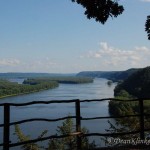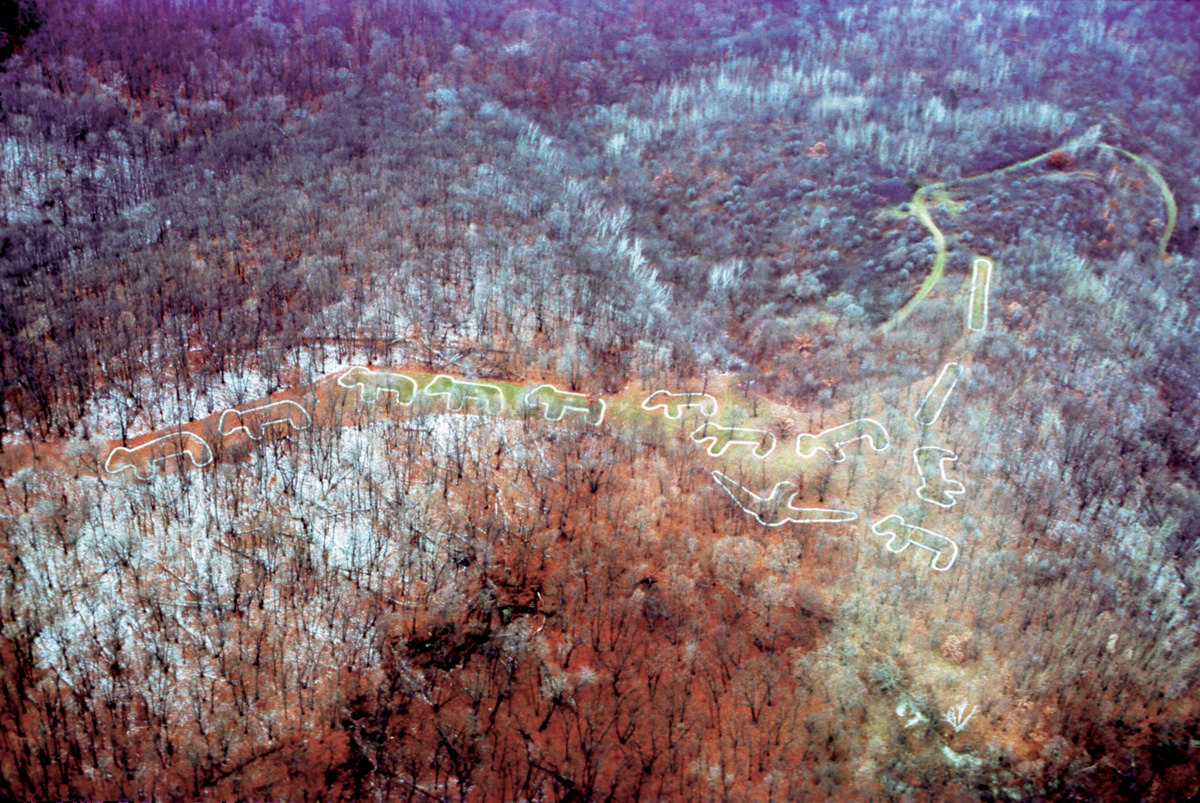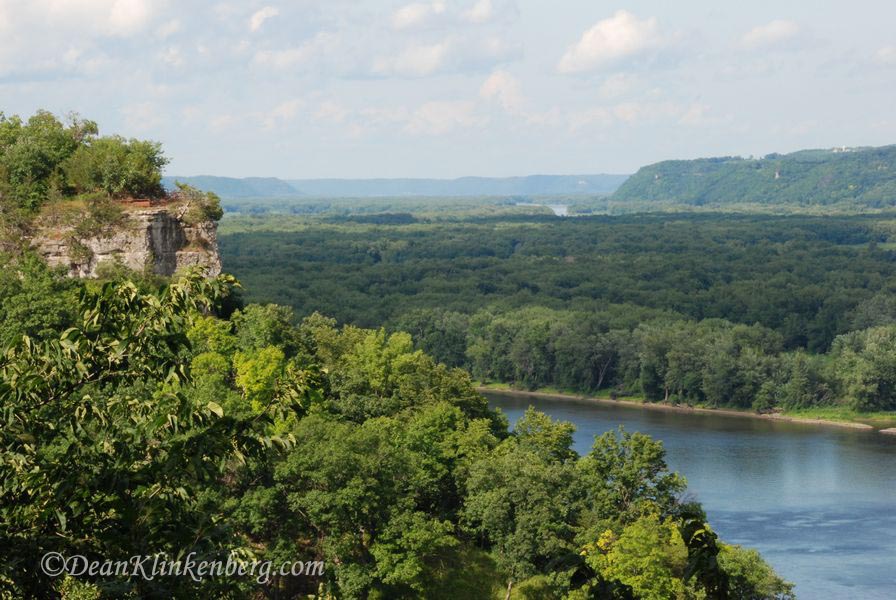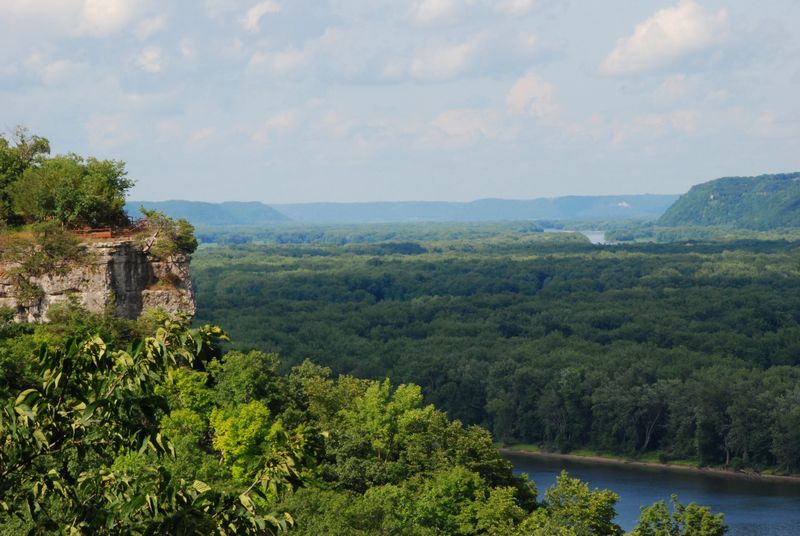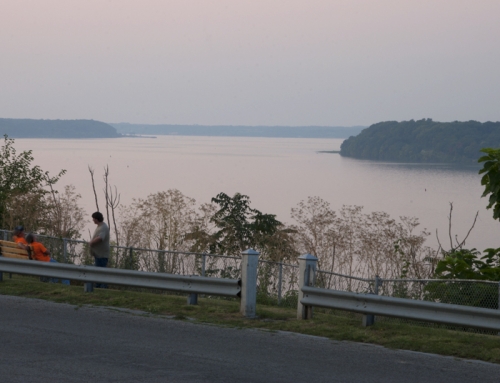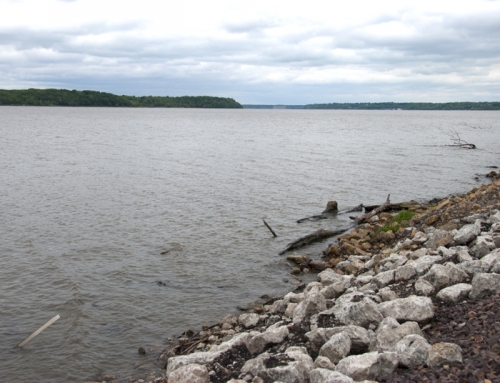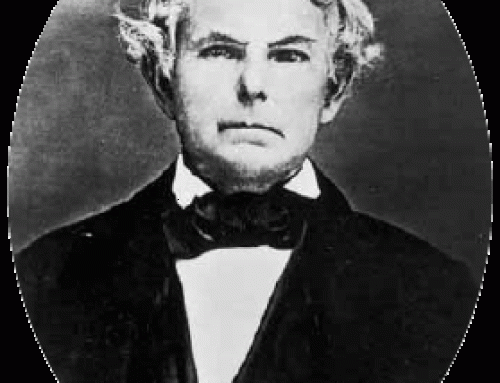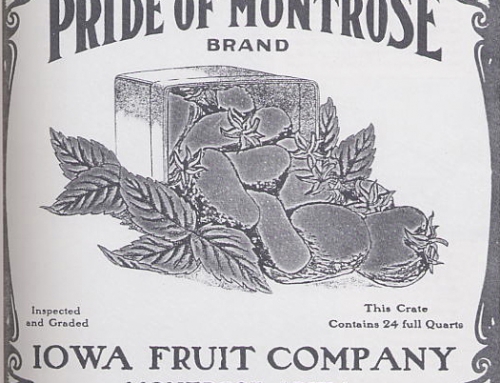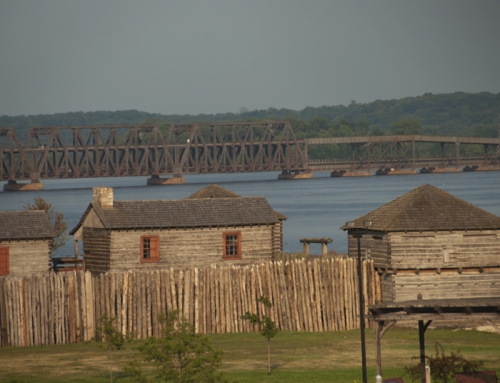Introduction
A few miles north of Marquette there is a series of remarkable burial mounds preserved at Effigy Mounds National Monument (151 State Highway 76; 563.873.3491). A stop here should be high on the wish list of anyone interested in the history of the Mississippi Valley.
Visitor Information
Got questions? Contact the park office at Effigy Mounds National Monument (151 State Highway 76; 563.873.3491).
History
People have lived along the Mississippi River for thousands of years. In northeast Iowa, there is evidence of human habitation going back 10,000 years. About 2,500 years ago, people began building simple mounds to bury their dead. These societies lived off the bounty of the land, moving with the seasons to take advantage of the best available plants and animals to eat.
A few centuries later—about 1,400 years ago—people in the area began building mounds in the shapes of animals. We don’t really know why they were built. It’s possible that they were clan symbols, but they might also have been built as a way to connect this world to the next. In some later American Indian cultures, for example, bears were considered guardians of the land, while birds were guardians of the sky.
The last effigy mounds were built about 850 years ago. Around that time, the people in the area (who we call the Oneota) began living in larger villages and relying more on agriculture. Europeans began showing up in the 1600s. (Marquette and Joliet canoed by the area in 1673). For nearly two centuries, fur trading dominated the local economy, but few Europeans settled permanently here. By the first part of the 19th century, though, Europeans and Americans moved to the region with the intention of sticking around.
Around 1900, surveyors counted over 10,000 mounds in the region, but 90% of them would be lost in the next century. Effigy Mounds National Monument was created in 1949 to preserve the remaining mounds, many of which are unique to this area. The site preserves about 200 mounds, 31 of which are effigies.
Ellison Orr played a significant role in the creation of the monument. A native of northeast Iowa, he spent years mapping mounds in the region and excavated a few. His book, The Reminiscences of a Pioneer Boy, describe life in the prairies and along the rivers of the Upper Midwest before widespread farming took root. He was a persistent advocate for creating a park to protect the remaining mounds.
A contemporary of Orr, Emma Big Bear Watson was one of the last Ho-Chunk (Winnebago) Indians in the region who lived a traditional lifestyle. She lived much of her life in a traditional called a wikiup, a dome-shaped hut built of limbs and covered with grass mats. She and her husband lived off the land, earning additional income by making traditional, intricate woven baskets, many of which are now highly prized by collectors.
Exploring the Area
Effigy Mounds National Monument (151 State Highway 76; 563.873.3491) preserves dozens of animal-shaped mounds built by Native Americans between 850 and 1,400 years ago. There are four types of mounds remaining at the site:
- Conical: the oldest extant mounds, these dome-shaped constructions are 2-8 feet high and up to 20 feet in diameter; they were typically used for burials.
- Linear: generally 2-4 feet high and up to 100 feet long; we aren’t sure why they were built.
- Compound: conical mounds connected by linear mounds. These are unique to this region; the longest one at Effigy Mounds connects seven conical mounds and runs 480 feet long.
- Effigy: mounds in the shape of an animal. There are many animals represented but the most common designs are birds and bear; you will also see turtles, bison, and lizards. Some bird effigies have wingspans up to 200 feet wide; Great Bear Mound is 137 feet long and 70 feet wide at its widest point. Many of the effigy shapes are only fully recognizable from several feet above them.
Start at the Visitors Center for an overview of the history of the mounds and their construction; there is no admission fee. The national monument has three primary units.
- The North Unit is adjacent to the visitor center. Getting to the mounds requires a moderately strenuous hike uphill. The longest hiking route is seven miles and includes several good overlooks of the Mississippi River, as well as multiple mound groups.
- The South Unit is across the Yellow River from the Visitors Center. The main attraction is the mounds of the Marching Bear Group, which are worth the effort; getting to them requires a moderately strenuous four-mile round-trip hike through upland forests and prairies.
- The Sny Magill Unit has over a hundred mounds that are mostly conical and linear designs, but the quiet location along a backwater slough gives the place a palpable spirituality. It is worth an extra stop to walk around this place for an hour or so. Just be aware that the access road floods easily so the site may be closed in spring. The Sny Magill Unit is about 11 miles south of the park office along County Highway X52 and 4 miles south of Pikes Peak State Park. The road to the site does not seem to have a name, but it is the gravel road on the north side of the bridge over Sny Magill Creek and just before Keystone Road.
You can easily spend half a day at Effigy Mounds. I have hiked nearly all of the South Unit trails in about two hours. You won’t find any drinking fountains along the trails, so bring water if you plan on being out for more than a short hike. And don’t forget the bug spray.
Tours
Park rangers sometimes lead guided tours around the site, usually during the summer months. Check with the park office to find out what’s going on.
Entertainment and Events
Festivals
Effigy Mounds hosts several festivals and special events throughout the year such as the Native American Cultural Festival held every two or three years.
**Effigy Mounds is covered in Road Tripping Along the Great River Road, Vol. 1. Click the link above for more. Disclosure: This website may be compensated for linking to other sites or for sales of products we link to.
Where to Sleep
There’s no lodging in the immediate area, but you’ll find plenty of options just a few miles away around Harpers Ferry, Marquette, and McGregor.
Where to Go Next
Heading upriver? Check out Waukon Junction.
Heading downriver? Check out Marquette.
Community-supported writing
If you like the content at the Mississippi Valley Traveler, please consider showing your support by making a one-time contribution or by subscribing through Patreon. Book sales don’t fully cover my costs, and I don’t have deep corporate pockets bankrolling my work. I’m a freelance writer bringing you stories about life along the Mississippi River. I need your help to keep this going. Every dollar you contribute makes it possible for me to continue sharing stories about America’s Greatest River!
Effigy Mounds Photographs
©Dean Klinkenberg, 2024, 2021, 2018,2013,2011
